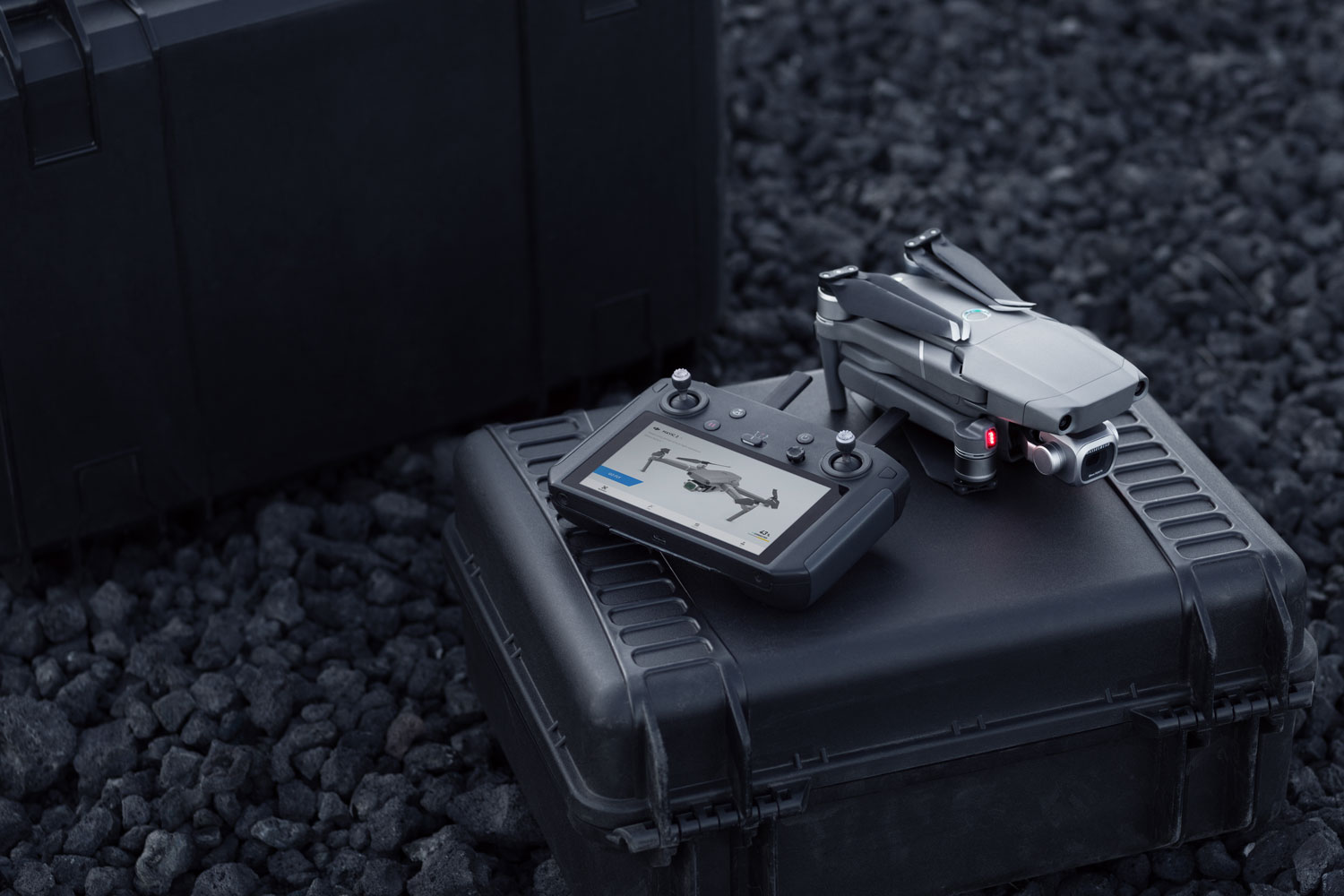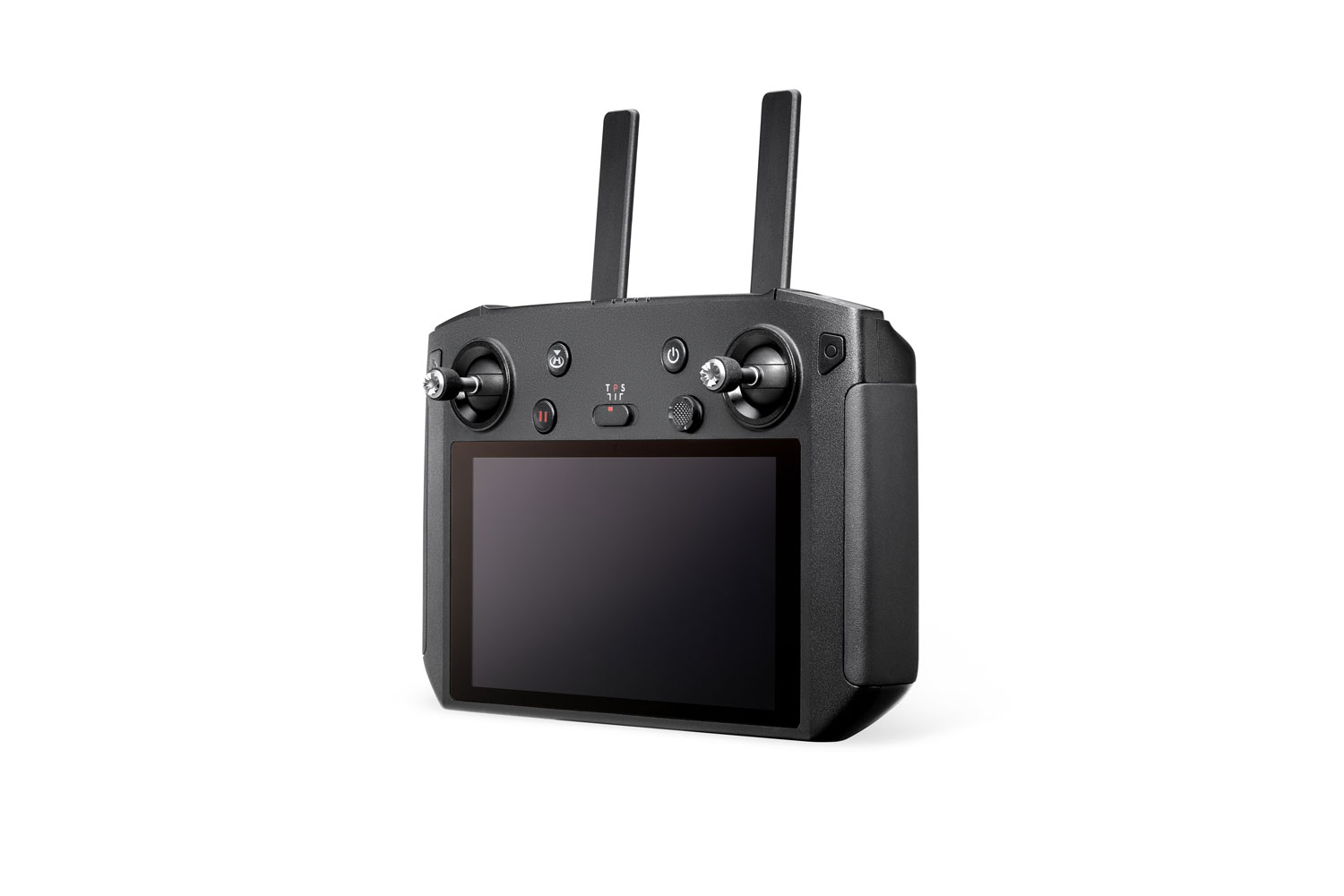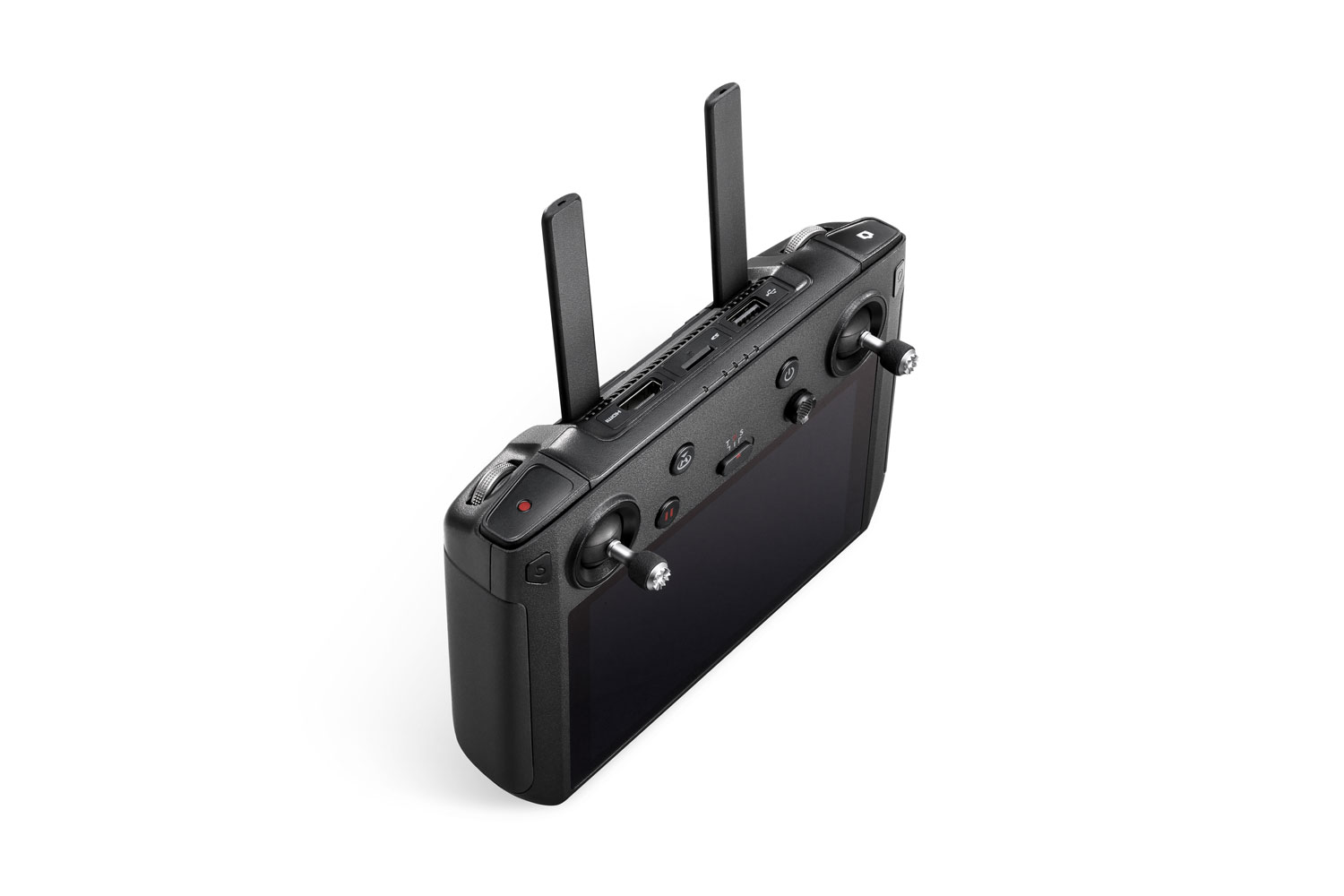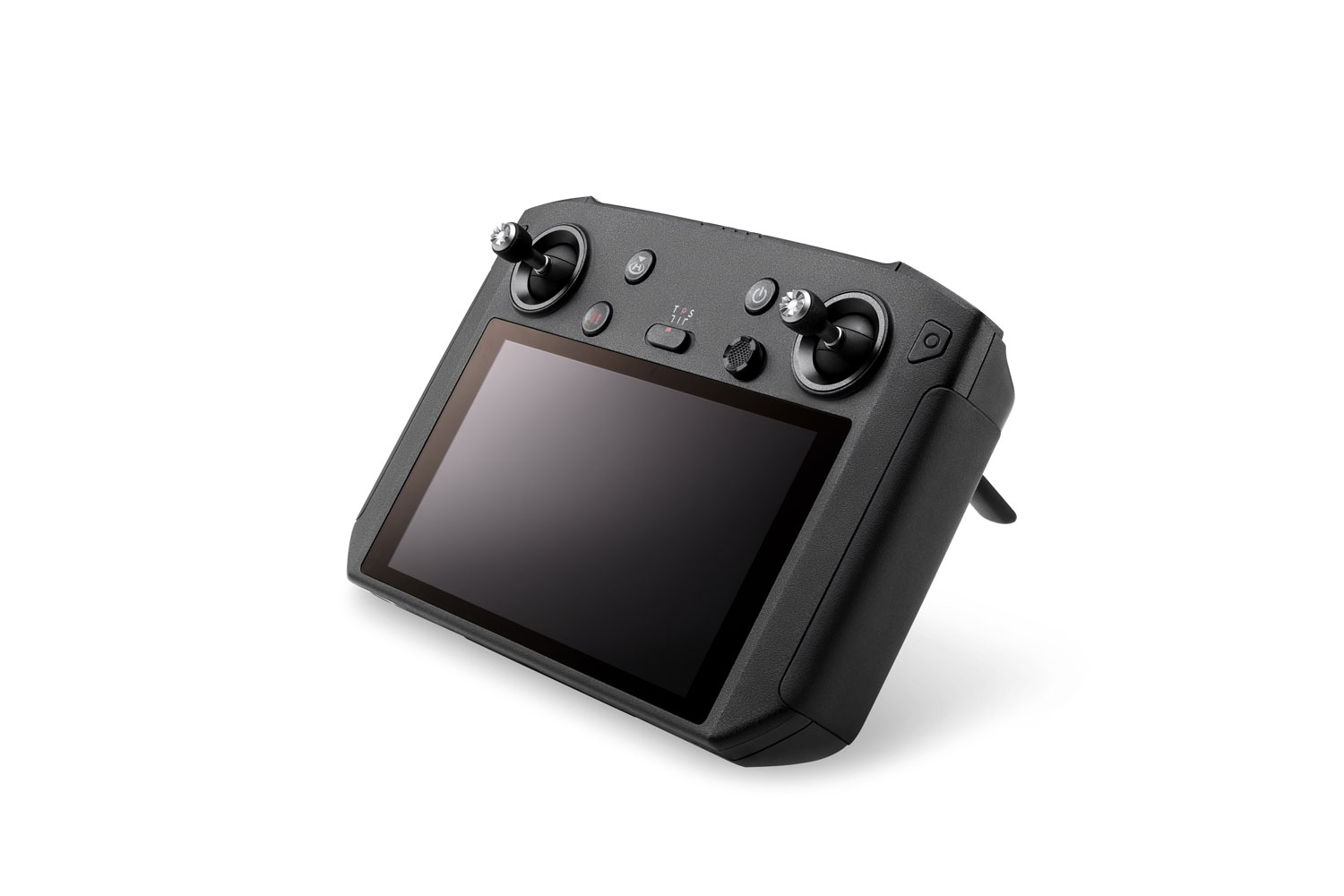DJI has revealed a new radio controller with a built-in 5.5-inch, full-HD screen, because plugging your phone into a controller to fly your drone is just so 2018. Beyond simplifying the setup and letting you keep your phone in your pocket, DJI says the screen’s 1,000-candelas-per-square-meter brightness is twice as bright as a standard phone, which should make it easier to see in bright sunlight. Called the Smart Controller, DJI is demonstrating it this week at CES 2019 in Las Vegas.
The controller uses DJI’s OcuSync 2.0 wireless transmission technology to beam a Full HD video stream from a compatible drone, like the Mavic 2 Pro and Zoom, to the screen in real time. OcuSync 2.0 automatically switches between 2.4 and 5.8 gigahertz frequencies to avoid environmental interference, and works at distances up to 8 kilometers (about 5 miles).
SkyTalk technology also lets pilots livestream their drone’s point of view to Facebook, Instagram, and WeChat. Pilots can even narrate their streams thanks to the integrated microphone. The Smart Controller can also play back 4K video at up to 60 frames per second on an external monitor over HDMI, or transfer video files wirelessly to your mobile device.
For creators on the go, the controller’s sticks can be removed to give it as narrow a profile as possible when slipping it into a bag. It can operate in temperatures as low as -4 degrees or as high as 104 degrees Fahrenheit.
One potential downside is that that large screen draws a lot of power. With an integrated 5,000mAh battery, pilots should get 2.5 hours of use out of the Smart Controller — which isn’t exactly a lot, but it’s certainly enough to outlast the battery in your drone. However, whereas a depleted drone battery can be quickly swapped out for a fresh one, the controller battery is not removable and takes 2 hours to recharge.
The Smart Controller will also cost $650 when it goes on sale later this year, which is more than half the cost of a Mavic 2 Zoom drone. DJI will also be offering Mavic 2 Pro and Zoom kits that bundle in the Smart Controller, but pricing on these has not yet been announced.










